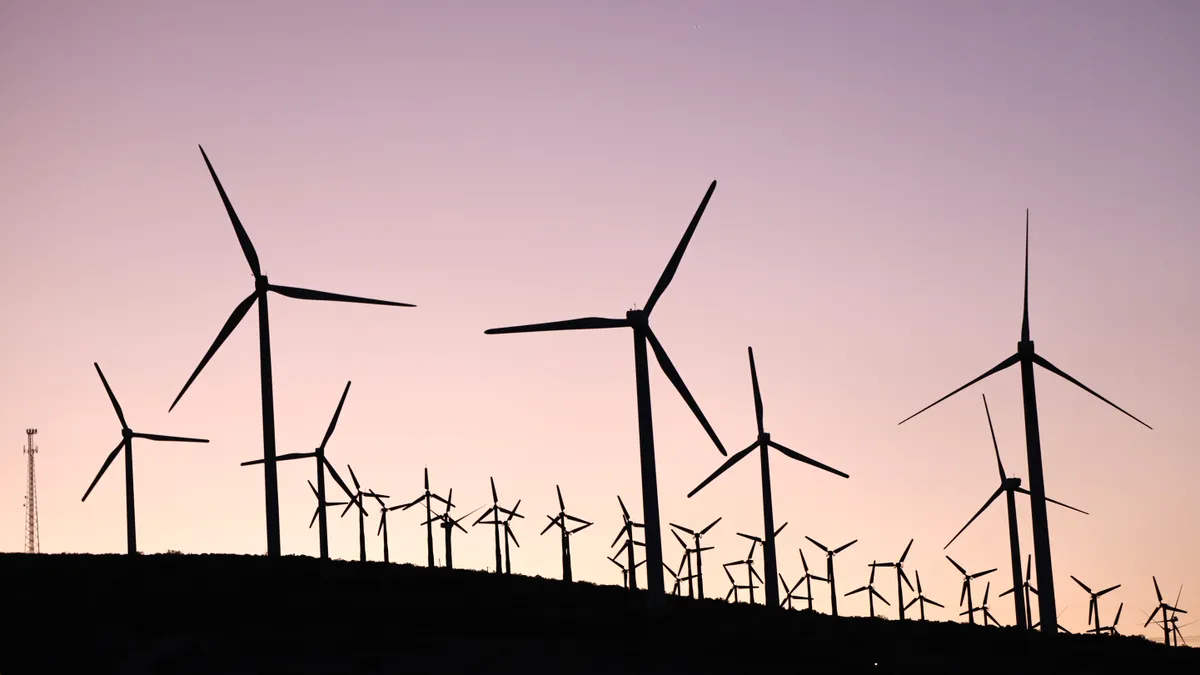Dive Brief:
- The U.S. Department of the Treasury and IRS issued proposed guidance on Wednesday for the Inflation Reduction Act’s new technology-neutral 48E and 45Y clean electricity credits, which will replace existing production and investment tax credits.
- The new credits are “one of the law’s most significant reforms,” Treasury said in a statement. A report released last week by Rhodium Group said guidance on the 48E and 45Y credits “may be the single most important Inflation Reduction Act implementation action the IRS will take.”
- The credits offer “incentives for the first time to any clean energy facility that achieves net zero greenhouse gas emissions,” and the guidance recognizes “wind, solar, hydropower, marine and hydrokinetic, nuclear fission and fusion, geothermal, and certain types of waste energy recovery property” as qualifying technologies, Treasury said.
Dive Insight:
Under the IRA, the existing Internal Revenue Code Section 45 production tax credit and Section 48 investment tax credit will be sunsetted and replaced by the new credits by the end of the year. The prior tax credits are only available to projects starting construction before 2025, and the new credits will apply to projects placed in service after December 31.
“48E and 45Y are available to any eligible project that commences construction before 2033 or the year that US electric power CO2 emissions fall below 25% of 2022 levels, whichever is later,” said the Rhodium Group’s report. “Our latest projections do not find emissions falling below that phaseout threshold at least through 2035, though new EPA power plant rules or other changes in market factors could change that.”
Doug Vine, director of energy analysis at the Center for Climate and Energy Solutions, or C2ES, said the prior tax code was “much more complicated,” and the new credits “should, theoretically, make it much more straightforward for companies” to take advantage of them.
Additionally, Vine said, the technology-neutral nature of the credits could spur the innovation of new technology during the period in which they’re available.
And that period is longer than it previously has been for similar credits, he said, which sends a “better long-term signal to technology providers and investors.”
The Rhodium Group estimated that the tax credits will drive an additional gain of 146 to 308 GW of clean capacity to the grid by 2030, though the report notes that “high interest rates, siting and permitting challenges, and long interconnection wait times all present headwinds to clean electricity deployment.”
“While there is still time for the industry to speed up, realizing the full benefits we model here likely requires improvements in addressing these impediments,” the report says.
Potential loopholes
Environmental group Friends of the Earth raised concerns in a Wednesday release about the technology-neutral nature of the credits, which they say could incentivize energy sources that don’t produce greenhouse gas emissions but pose other environmental concerns.
“The Treasury and IRS must protect taxpayer dollars from being used for incentivizing harmful practices like trash burning, factory farming, and forest clearcutting,” said Sarah Lutz, a senior climate campaigner with the group. “It’s especially concerning that book-and-claim accounting gimmicks are even under consideration. We expect these loopholes to be closed when the rule is finalized.”
The proposed guidance requests comment on what criteria should be used to assess the net greenhouse gas emissions of tax credit-seeking facilities that rely on biogas, renewable natural gas or fugitive methane, as well as what practices should be put in place to avoid unintended consequences such as gaming of the system.
In an April letter to the Treasury and IRS proposing draft language for the guidance, C2ES recommended that “facilities producing electricity that utilize clean technologies that are noncombustible and non-gasification generally are designated as having a rate of zero emissions.”
Applicable technologies would include “wind, solar, nuclear, hydropower, energy storage (including hydropower), and marine and hydrokinetic technologies,” the group wrote.
The proposed guidance was “pretty much as expected,” Vine said. “I haven’t been through the whole thing yet, but what I've seen seems very thoughtful on the part of Treasury – there's a lot of detail there.”
“Directionally, I think we're of the same mindset,” he said. “It's something we'll be working on this week, tabulating and doing a side-by-side on what we recommended versus what's actually in there. But my sense is that we're directionally aligned.”














